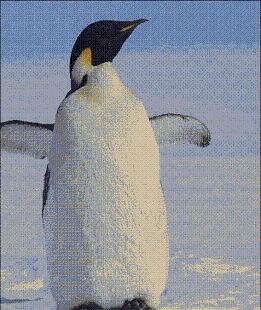

Text 2009 by Jack Hanna
All rights reserved. No portion of this book may be reproduced, stored in a retrieval system, or transmitted in any form or by any meanselectronic, mechanical, photocopy, recording, scanning, or otherexcept for brief quotations in critical reviews or articles, without the prior written permission of the publisher.
Published in Nashville, Tennessee, by Thomas Nelson. Thomas Nelson is a registered trademark of Thomas Nelson, Inc.
Cover and Interior Design: Birdsong Creative, Inc., Franklin, TN: www.birdsongcreative.com
Unless otherwise noted, photographs 2009 by Rick A. Prebeg, World Class Images. Brown bears 2009 by Columbus Zoo. Great white shark, octopus, and puffer fish photos 2009 by Scott Johnson. Platypus photos reproduced with the kind permission of Healesville Sanctuary, Victoria, Australia. Large naked mole rat photo 2009 by Skip Higgins. Small naked mole rat photo used with permission of National Geographic.
Thomas Nelson, Inc., titles may be purchased in bulk for educational, business, fund-raising, or sales promotional use. For information, please e-mail SpecialMarkets@ThomasNelson.com.
Library of Congress Cataloging-in-Publication Data
Hanna, Jack, 1947
Jungle Jack's wackiest, wildest, weirdest animals in the world / Jack Hanna ; photographs by Rick A. Prebeg.
p. cm.
ISBN 978-1-4003-1140-8 (handcover)
1. Exotic animals--Juvenile literature. 2. Animals--Juvenile literature. I. Prebeg, Rick A., ill. II. Title. III. Title: Wackiest, wildest,
weirdest animals in the world.
QL49.H2868 2009
590--dc22
2009000588
Printed in China
09 10 11 12 13 MT 6 5 4 3 2 1
CONTENTS


What Makes Them Wacky
The name blue-footed booby alone would win a wacky contest, but this birds name is just the beginning of its wackiness. Being a marine bird, its naturally graceful in and over the water. Yet when those blue feet land on solid ground, this bird can be pretty clumsy.
That clumsiness doesnt stop the boys from trying to impress the girls with their zany dance moves. The male will hop from one foot to the other, holding one foot up high for the female to see. The boys know that, in the end, the one with the bluest feet wins! For the grand finale, the male whistles the female honks, and they strut around together, pointing their beaks to the sky. What a crazy sight!

The blue-footed booby was probably named for the Spanish word bobo, which means dunce or stupid.
The blue-footed booby is a marine bird.
That means it spends most of its time in or around the ocean!

Baby blue-footed boobies eat fish that are regurgitated (swallowed and spit back up) from their parents mouths.
Howd you like that for dinner?!

What they eat:
Small Fish
Where they live:
Central and South American coasts and the Galpagoes Islands
How big they get:
About 3 pounds, 30 to 34 inches long, 5-foot wingspan

What Makes Them Wacky
Baboons have some really interesting habits. From their social structure to their daily schedules, they do a lot of things we do. In the mornings, the adults groom while the children play before they all head out as a group to hunt and feed with the dominant male as their guide.
They take a break around lunchtime and then continue to forage the rest of the afternoon. At the end of the workday, they return to their homes where they clean up before retiring to bed sounds a lot like my daily schedule! What about yours?
Can you guess the baboons favorite pastime? He and his friends sit around for hours picking dead skin and insects from each others fur. (Yeah, I think Id stick with soccer!)

You cant miss the baboons red backside! Its actually just calloused, nerveless skin that acts as a built-in seat cushion.
What they eat:
Bark, grasses, fruits, roots, birds, small mammals
Where they live:
The tall trees and savannas throughout Africa and Arabia
How big they get:
30 to 100 pounds, 20 to 50 inches tall
JUNGLE JACK ADVENTURES

BABOONS ARE BANANAS!
Watching a baboon troop is just like watching a wacky family interact. Once in Kenya, a huge group of a hundred or so baboons came by where we were staying. The big boss had a huge, furry mane and was leading the troop like a king. He was followed by mothers with babies hanging off or riding on their backs like little jockeys.
As they traveled, they would speak to one another through grunts, growls, barks, chirps, and even body language. They would shrug their shoulders, smack their lips, grin, and stare down their opponents. Ive even heard they can fit six bananas in their mouth at one time. But dont try that one at home!

What Makes Them Wacky
Just watching the wacky waddle of the emperor penguin can make you chuckle. Because they live in such harsh conditions, God designed penguins with some pretty heroic instincts that help their families survive and even thrive in the icy Antarctic climate.
The circle of life begins when the mom penguin leaves to look for food, while the dad penguin takes care of their egg. He protects the egg from the frigid earth by gently resting it on top of his feet and covering it with a fluffy layer of his tummy feathers called a brood. To survive the cold, the dads all huddle in a circle, protecting one another from the blustery snow. They share the warmth by rotating between the toasty interior and chilly exterior of the huddle.
In the meantime, the moms are out hunting for food to bring back to their newly hatched chicks. After two months, the moms return to take care of the chicks, while the hungry dads head to the ocean to feed.
Next page




















